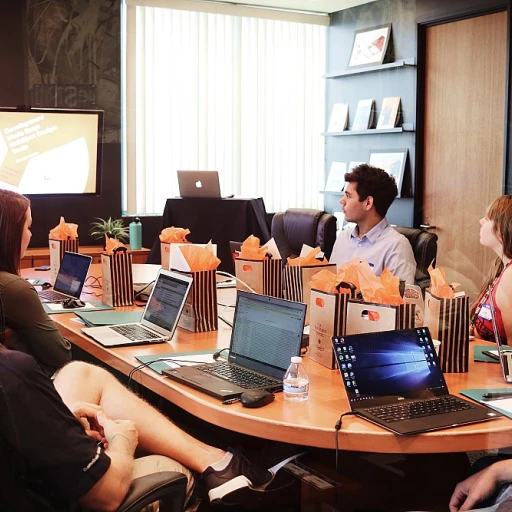
Understanding the Importance of Career Exploration
The Significance of Career Exploration in High School
Understanding the importance of career exploration during high school is crucial for students as they prepare for the transition from school to the workforce or higher education. This period is pivotal in shaping future career choices and educational paths. Embarking on career exploration allows students to:- Discover Interests: By engaging in various activities, students can identify their strengths and interests, which is vital for future career planning.
- Acquire Knowledge: Students learn about different career options and the educational requirements associated with each profession.
- Develop Skills: Gaining insight into the skills needed for various jobs helps students focus on the skills they need to develop.
Types of Career Exploration Materials Available
Diverse Materials for Comprehensive Career Exploration
For students embarking on the journey of career planning, the resources available play a crucial role in shaping their understanding and readiness for the future labor market. Schools and educational institutions have curated a variety of materials to aid in this transformative process.
Career exploration resources come in many forms, each tailored to suit different aspects of career readiness and learning styles. Below are some common types of materials available:
- Printed Guides and Books: Traditional resources such as guides and books provide comprehensive information on various careers, detailing job descriptions, required skills, and educational pathways.
- Interactive Workshops and Seminars: Participating in workshops allows students to engage in hands-on activities, helping them cultivate practical skills and real-world business acumen necessary for success in any field.
- Career Interest Surveys: These assessments help students identify areas of interest and aptitude, guiding them towards fields they may excel in based on their unique strengths.
Online Resources and Platforms: The digital space offers an abundance of information on career exploration. Websites dedicated to career technical education introduce students to concepts of work-based learning and life skills vital for high school students.
These materials offer invaluable information, but combining them with the right strategies and technological integration can significantly enhance their effectiveness. To learn more about skill-based upskilling paths and how they contribute to career growth, you can explore more resources on navigating skill-based upskilling paths for career growth.
Integrating Technology in Career Exploration
Leveraging Technology to Boost Career Exploration in Schools
Integrating technology into career exploration provides students with a myriad of advantages, preparing them for the future workforce. With the fast-paced digital evolution, schools are equipped with a range of tools that enhance learning experiences. These tools are indispensable in understanding various career paths and making informed decisions.
One prominent advantage of technology integration is the accessibility to diverse career exploration resources. Online platforms offer students insights into different career fields, from the arts to technical education, promoting career readiness and skill development. Such platforms often provide interactive elements like videos and virtual reality experiences that facilitate a deeper understanding of various professions.
Furthermore, technology fosters personalized learning experiences. With resources tailored to individual preferences and skills, students can engage in work-based learning activities that match their interests and strengths. This personalized approach supports students in navigating career pathways efficiently and effectively.
- Web-based apps and games make career exploration engaging and interactive.
- Online assessments help identify personal strengths and suitable career options.
- Virtual tours of industries and universities provide a first-hand look into higher education and job environments.
Teachers play a crucial role in guiding students through this technologically enhanced journey. By incorporating tech-based learning tools in their curricula, educators can offer career guidance and planning that aligns with students' life skills and aspirations.
Despite these benefits, challenges exist, such as ensuring equitable access to technology across different school districts. Addressing these barriers is essential for providing all students with the opportunity to explore and plan for their future careers effectively. As part of this initiative, educators and parents need to support students’ access to technology-driven learning resources and services.
Effective Strategies for Using PDFs in Career Exploration
Maximizing the Effectiveness of PDFs in Career Exploration
In the realm of career exploration, Portable Document Format (PDF) files have proven to be indispensable tools. They provide a structured way for students to access diverse resources and engage in learning activities essential for career planning. PDFs offer educators a versatile format to deliver curated content efficiently, aligning with various educational levels such as high school and college career readiness courses.
To make the most out of PDFs, educators and students should strategically incorporate them into their career exploration activities. Here are some effective strategies to consider:
- Diversifying Content: By including a mix of text, infographics, and interactive elements, PDFs can cater to different student learning styles. For instance, family consumer sciences and technical education materials can benefit from visual aids that enhance student understanding.
- Customizing Learning Paths: PDFs can be tailored to align with specific career readiness standards set by the state. By doing so, students receive personalized guidance, whether they are exploring career pathways in business, technical fields, or family consumer sciences.
- Incorporating Interactive Activities: Leveraging interactive PDFs encourages students to actively participate in career exploration exercises. Activities such as guided job search simulations or financial aid planning can be embedded within PDFs, offering practical, hands-on experiences.
- Cross-Platform Compatibility: PDFs are accessible across various devices, making them a convenient choice for both school-based learning environments and remote education. This compatibility ensures that career resources are available to all students, including those in special education or adult education programs.
While PDFs are a powerful resource, educators and students may face challenges in accessing them due to limitations in digital infrastructure or available technology. Schools must ensure adequate access to devices and reliable internet services to facilitate effective use of these materials. Furthermore, it's important for teachers to provide guidance on utilizing PDFs alongside other digital resources to enrich career exploration endeavors.
By understanding the potential of PDFs and addressing access challenges, educators can effectively harness this tool to enhance career exploration for all students, preparing them for future success in the labor market.
Challenges in Accessing Career Exploration Materials
Overcoming Hurdles in Career Exploration Accessible Materials
Addressing the challenges in accessing career exploration materials is essential to ensure all students benefit from these valuable resources. High school students often face obstacles that can hinder their career readiness and exploration journeys. Recognizing and addressing these challenges can significantly enhance their learning experiences and prepare them for the labor market. Problems stem from various factors, including socio-economic barriers, limited technological access, and language-related complexities. Often, students in special education or from under-resourced schools encounter additional difficulties obtaining relevant resources. Educational equity requires us to address these issues head-on.- Resource Availability: Access to resources, such as career readiness programs, technical education, and work-based learning opportunities, can be inconsistent. Schools with limited budgets may not afford diverse materials, impacting students' exposure to career possibilities.
- Technology and Digital Divide: While many resources have become digital, including PDFs and online exploration tools, not all students have reliable internet access. This digital divide creates a gap that can impede learning and exploring careers in science and business.
- Financial Barriers: Even in environments where resources are available, financial constraints can limit access to extracurricular career exploration activities like college fairs or special job search workshops. These opportunities can offer critical insights and skills.
- Complexity of Information: The sheer volume and complexity of information can overwhelm students, affecting those who may need simplified resources, such as those in family consumer sciences. Guidance in filtering relevant content can significantly improve outcomes.












